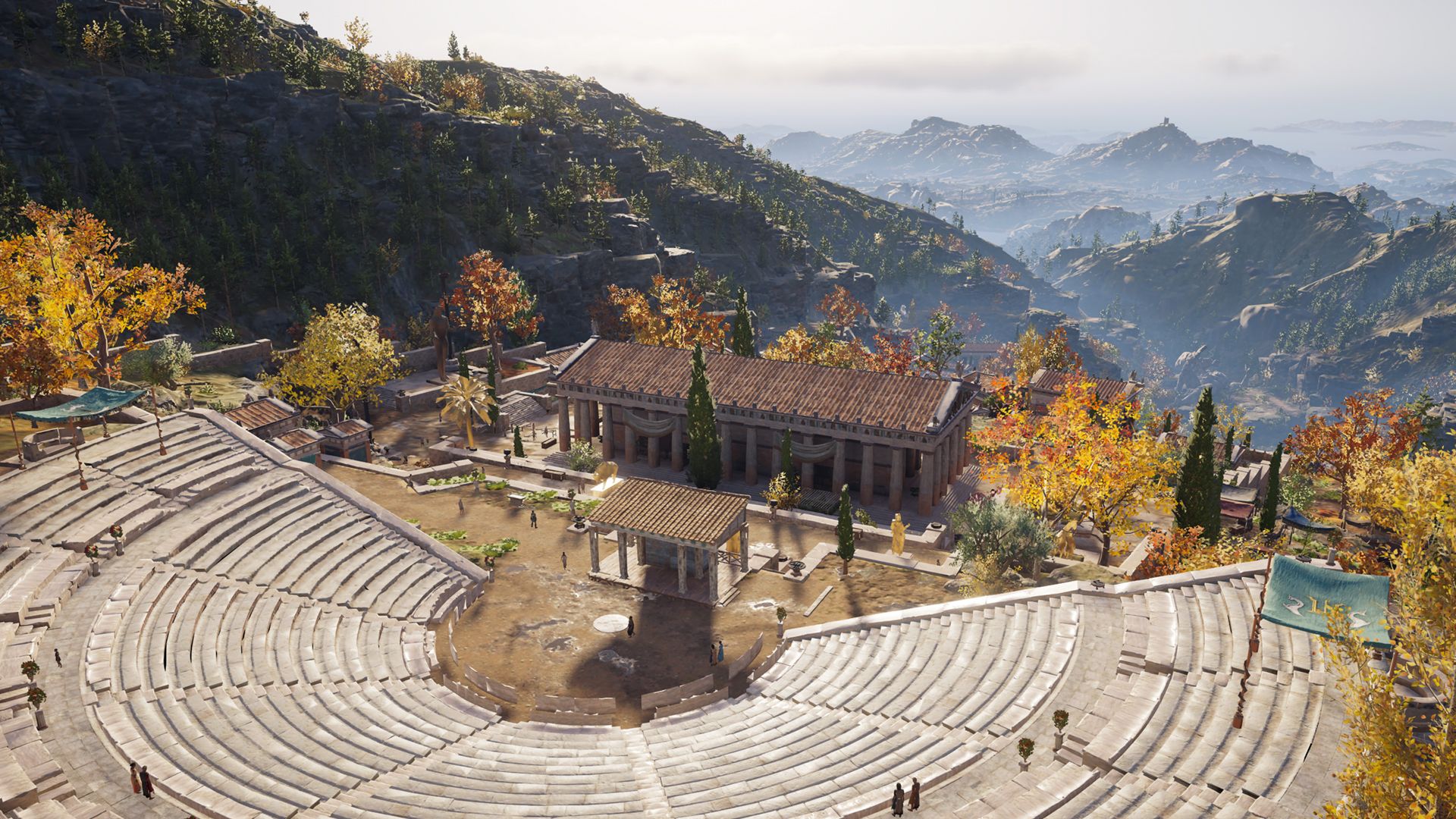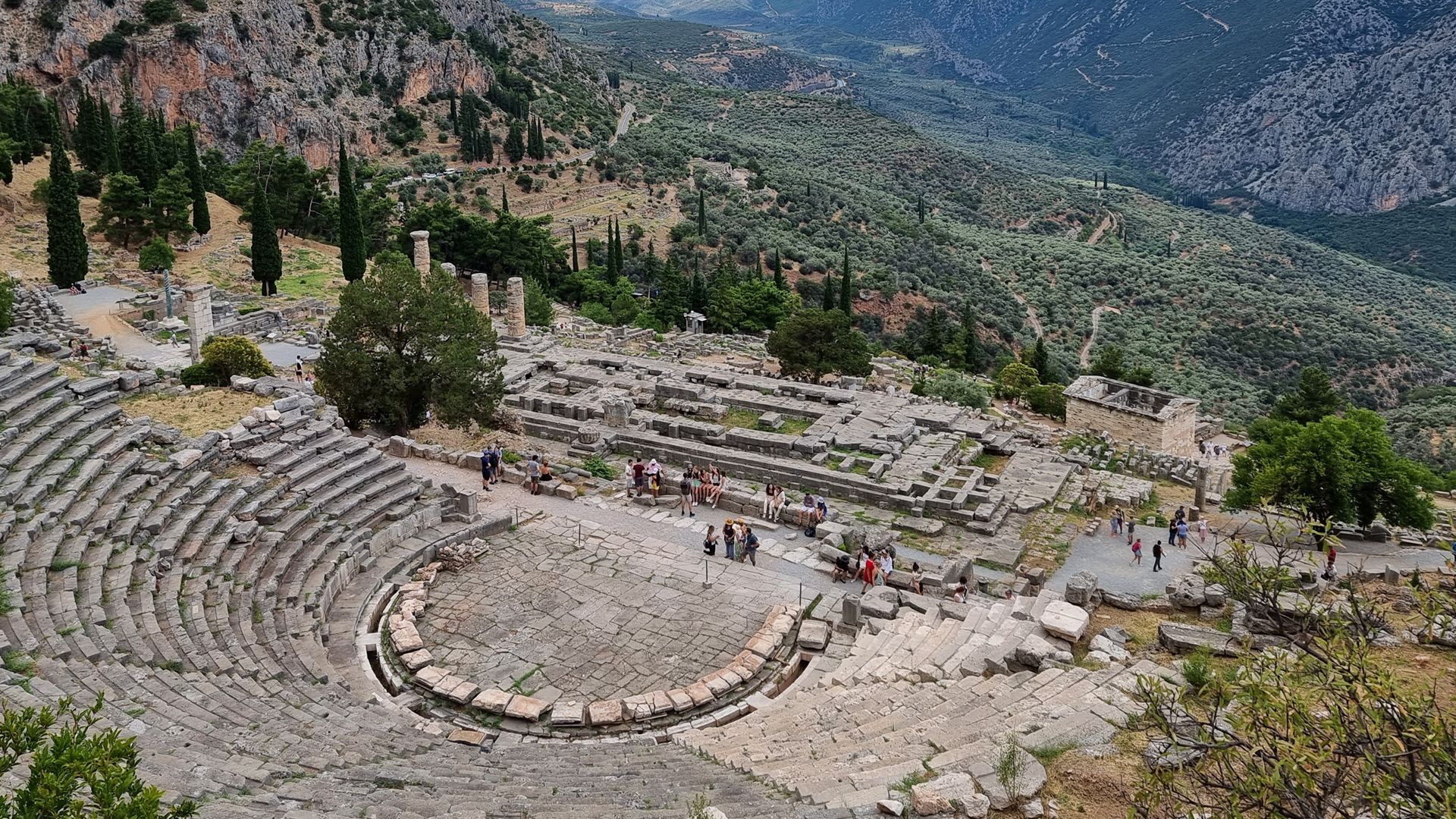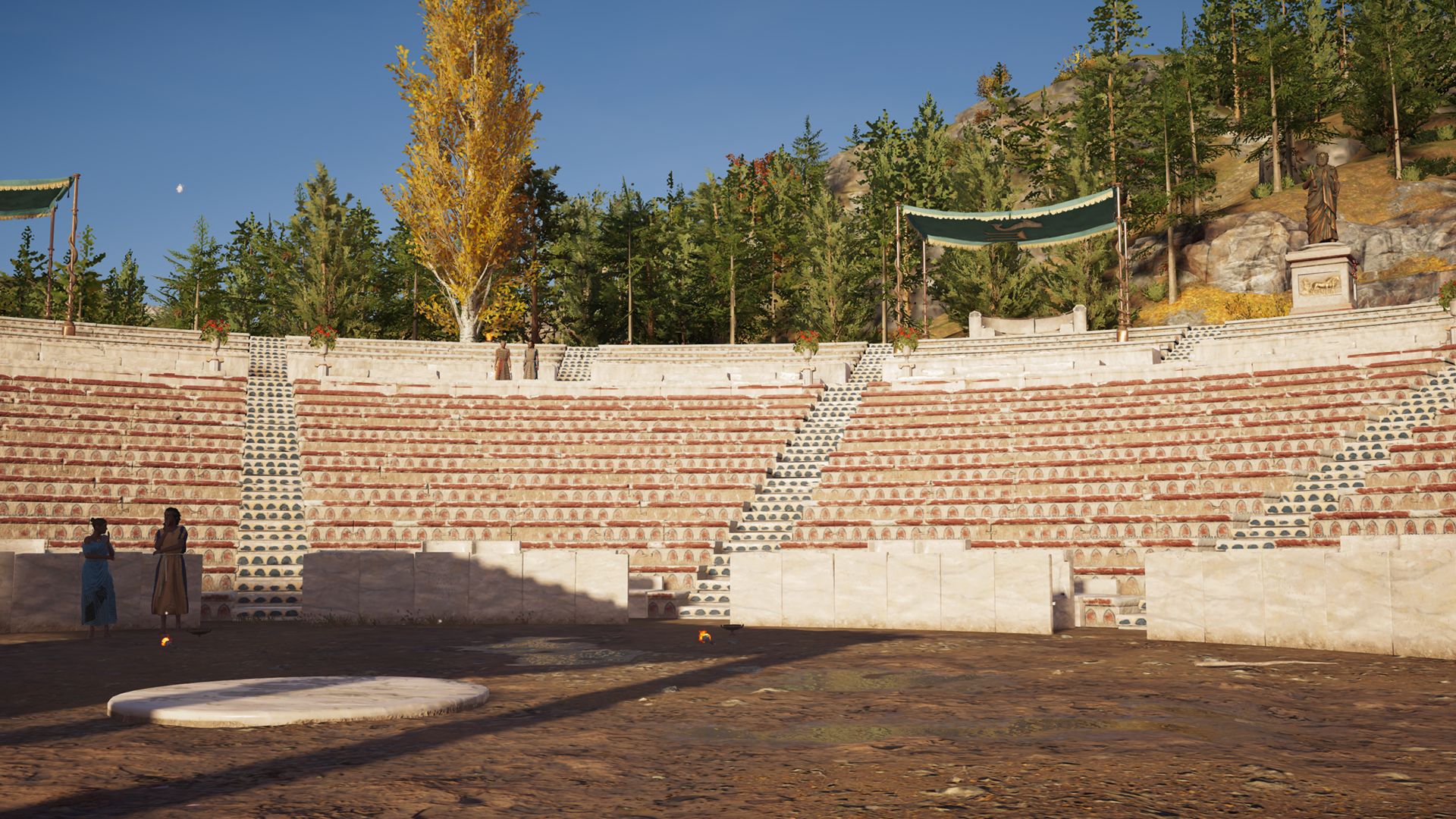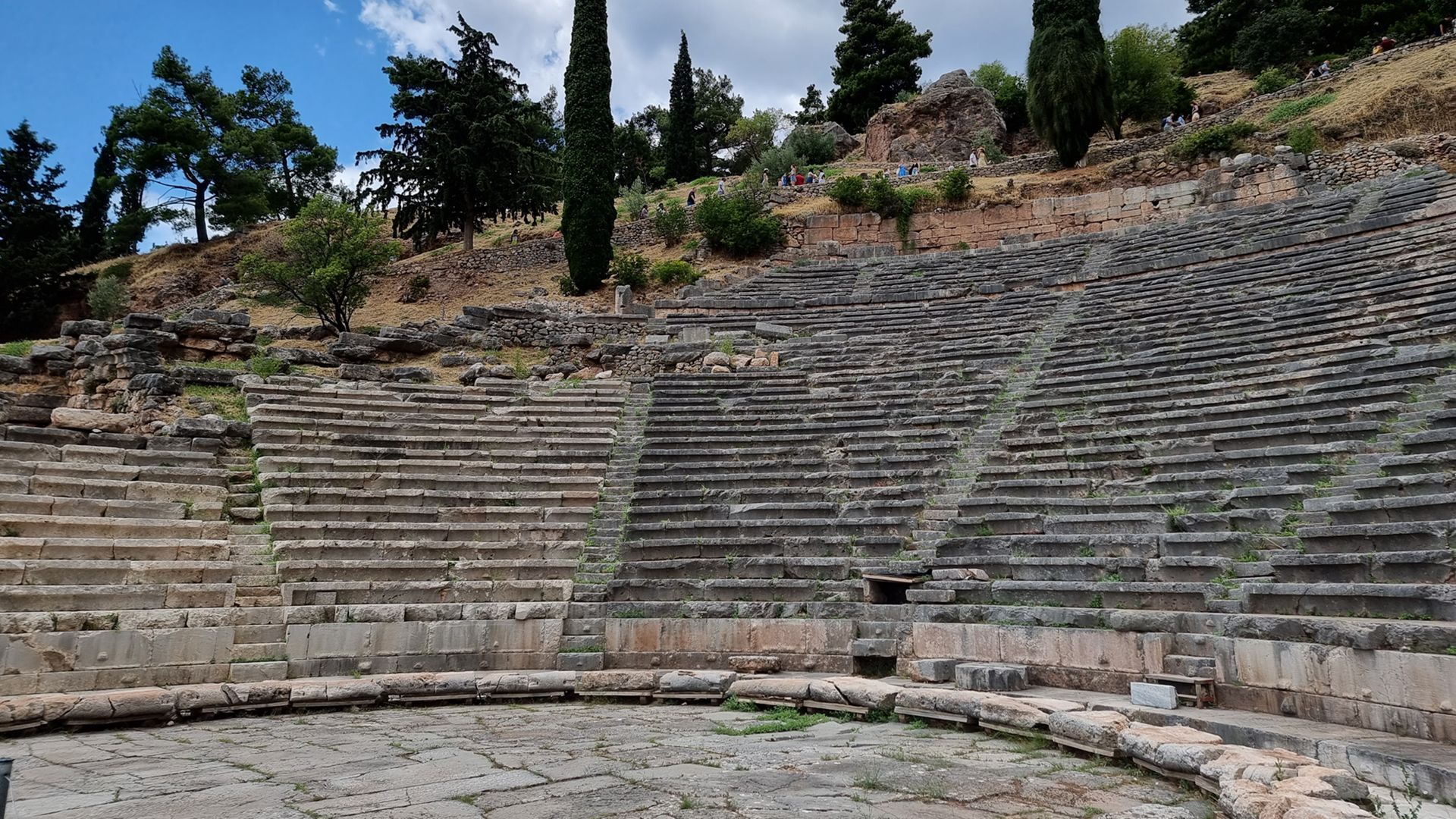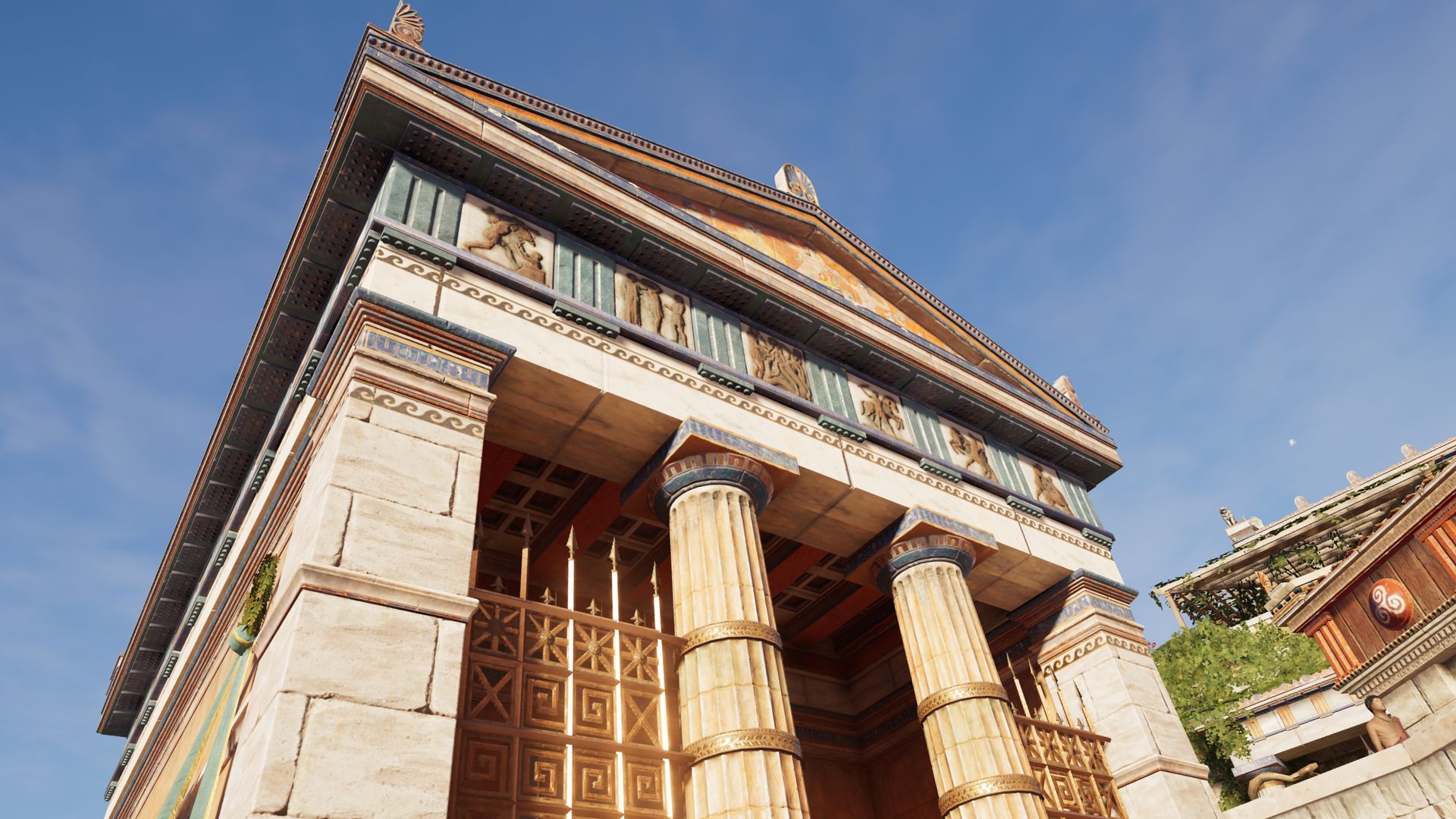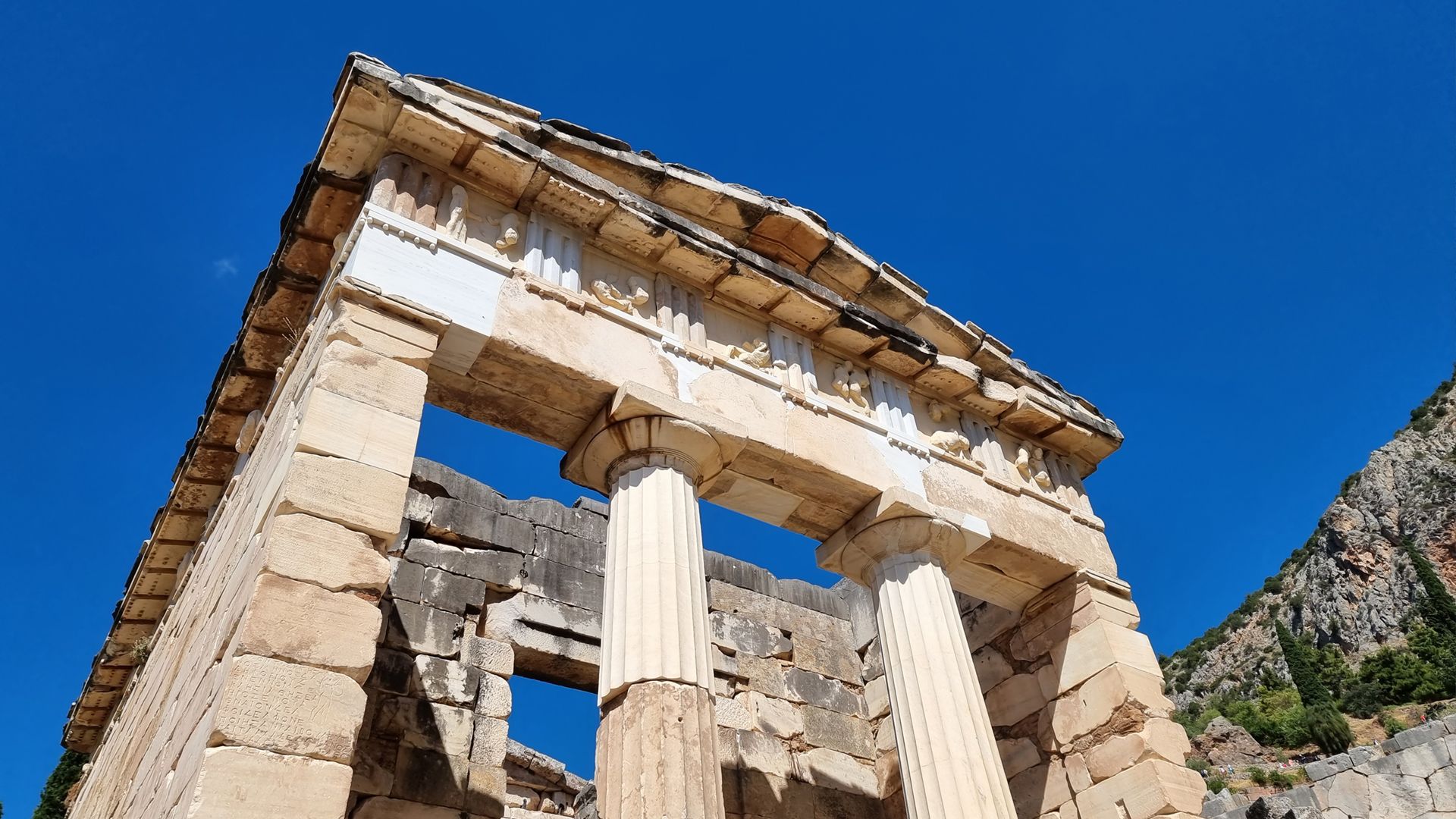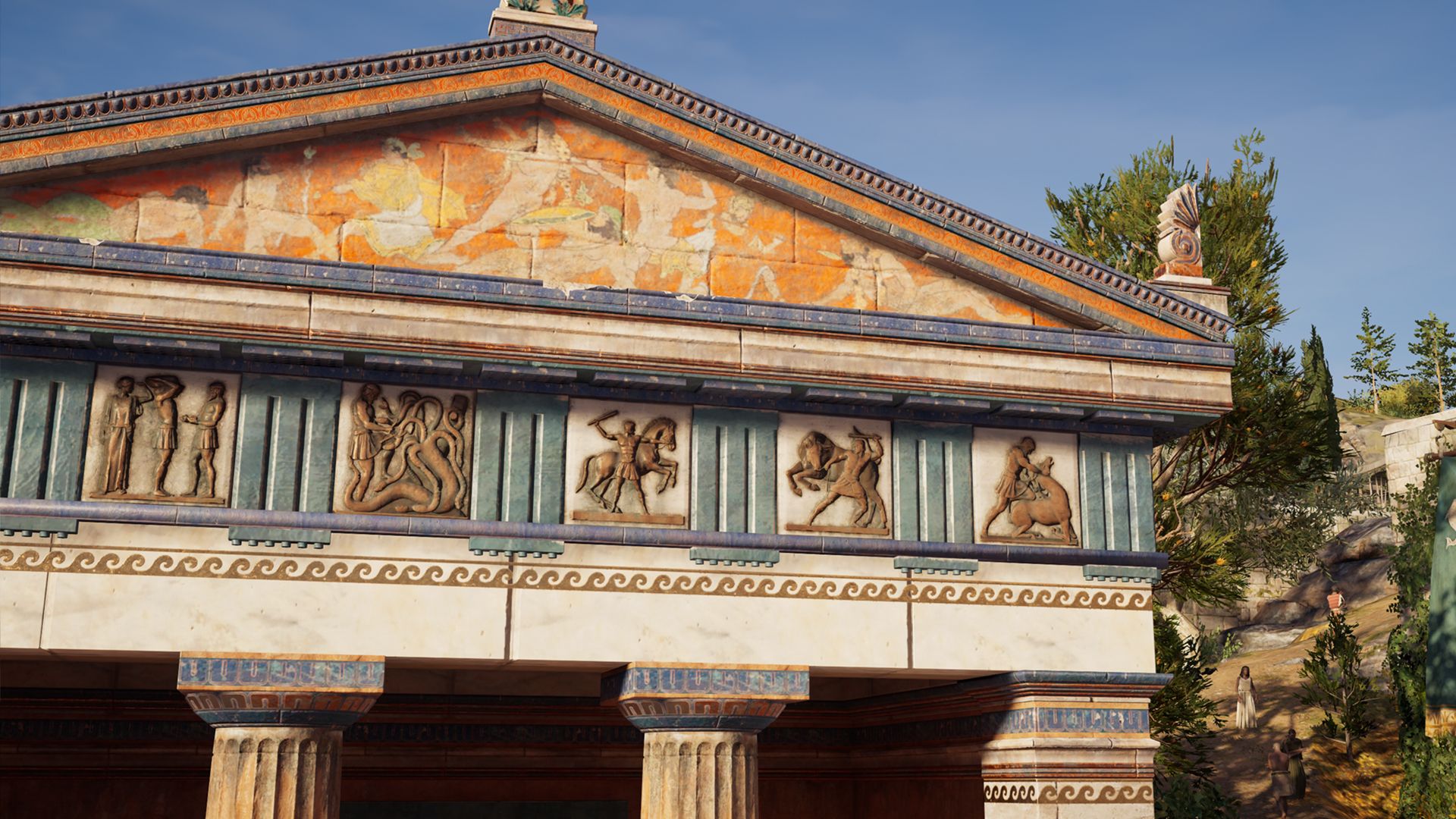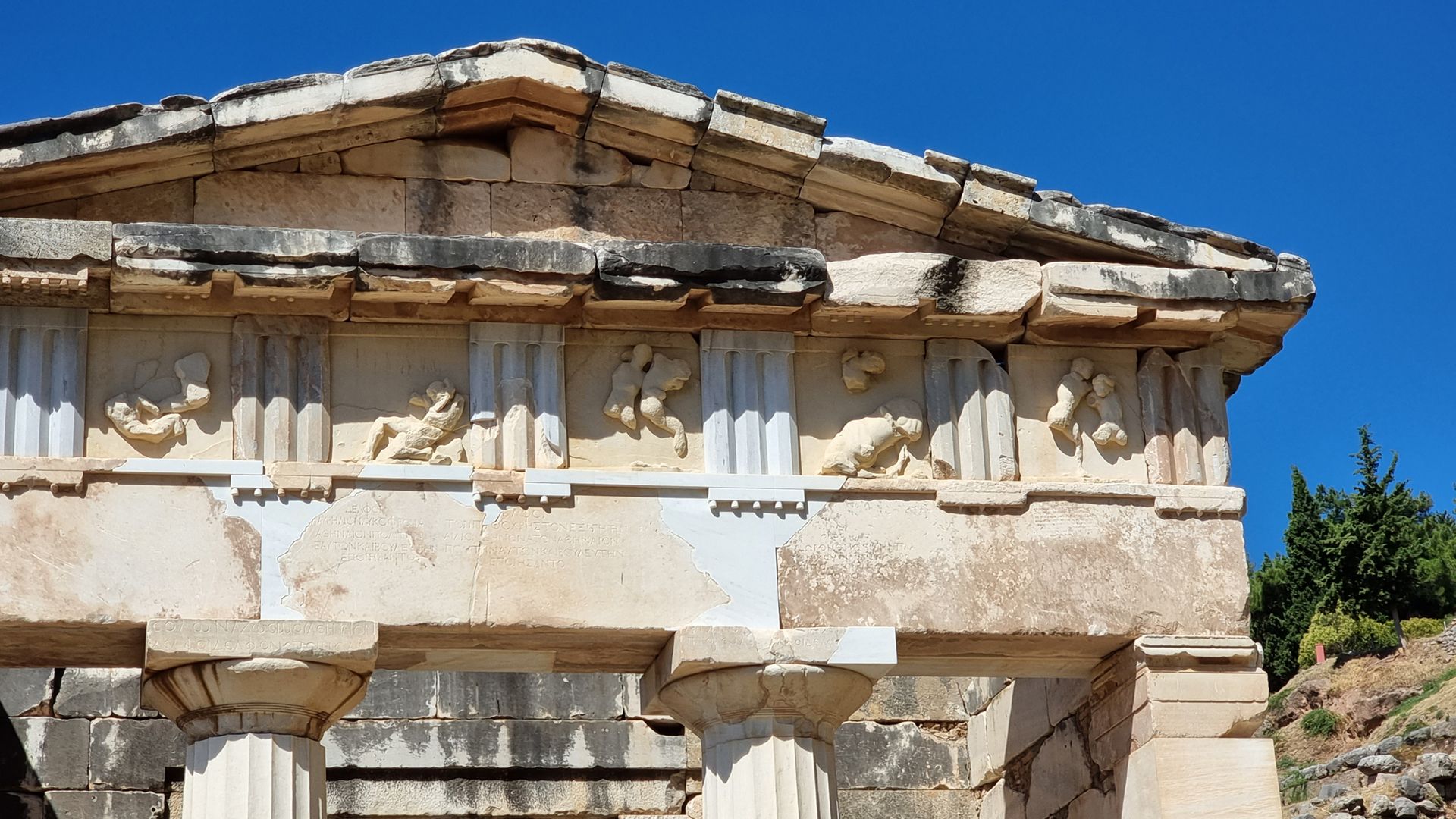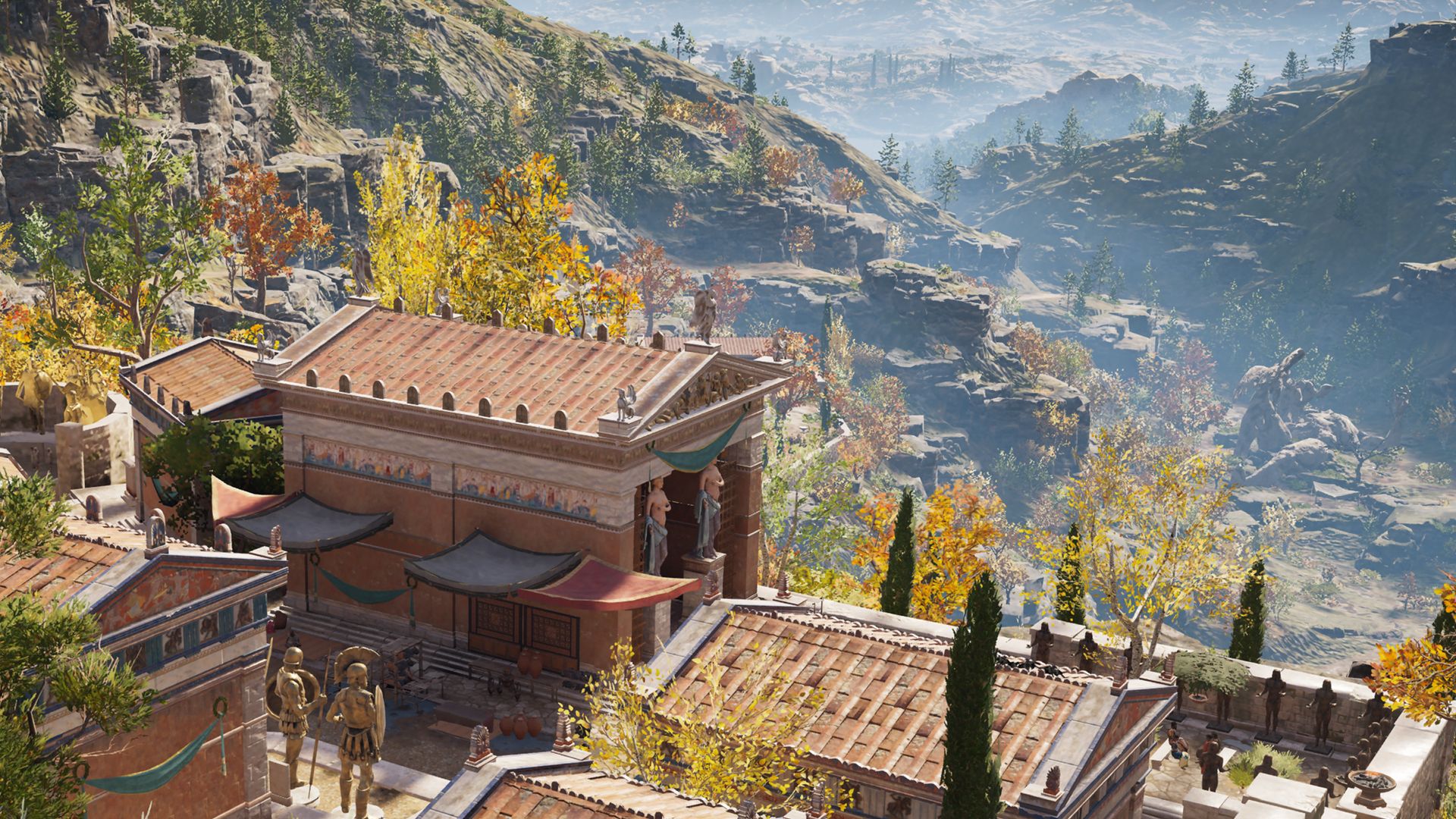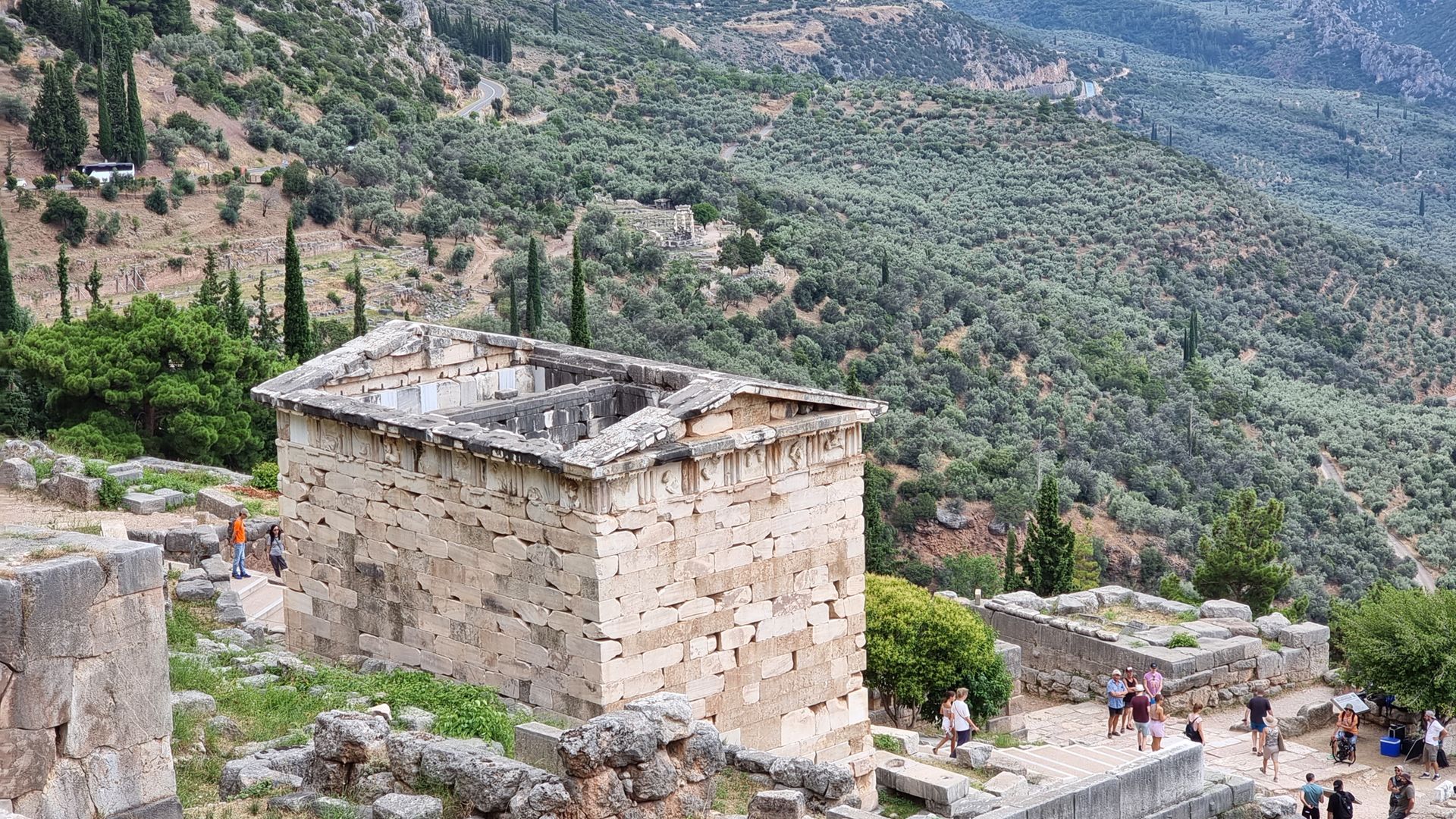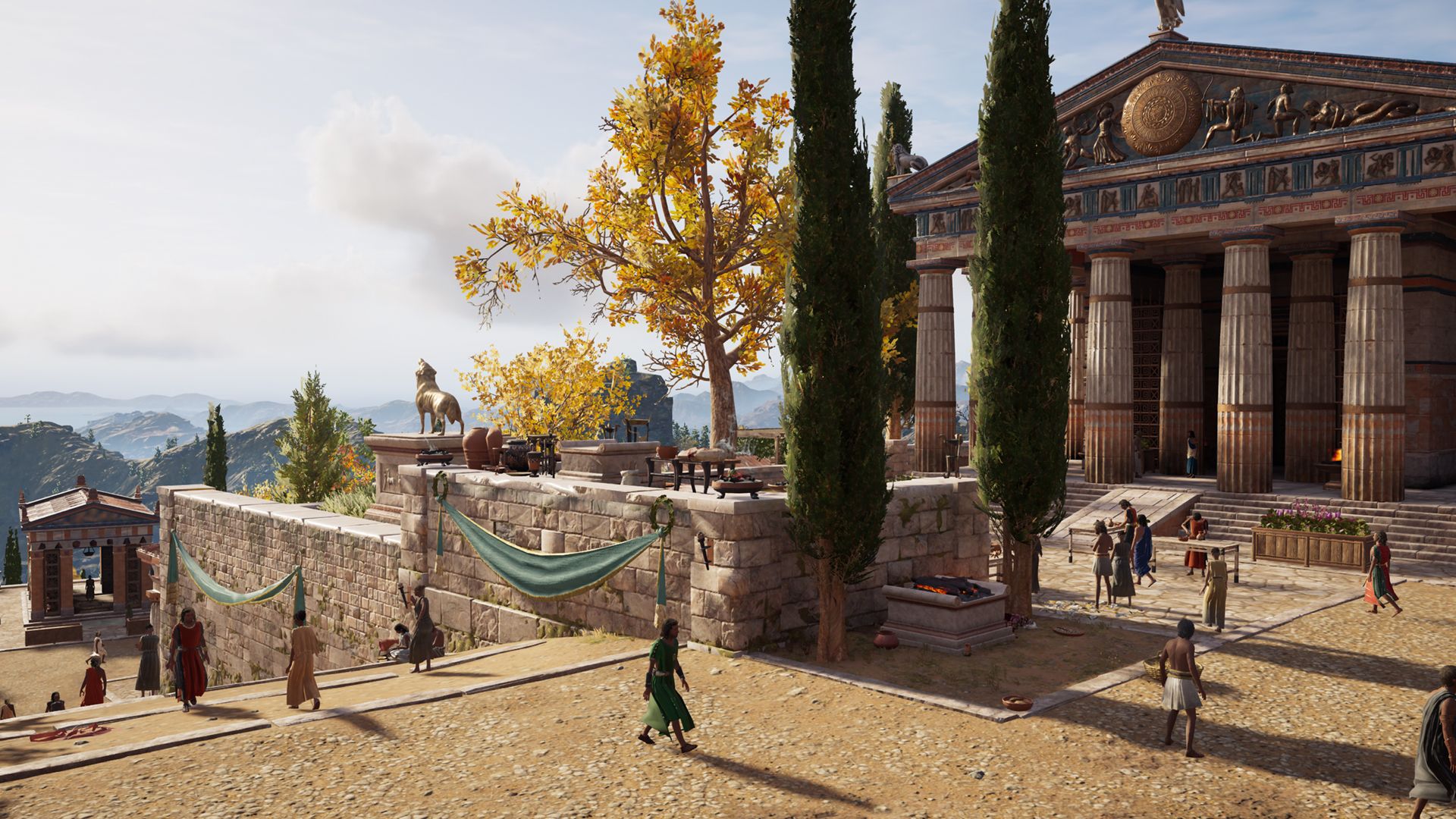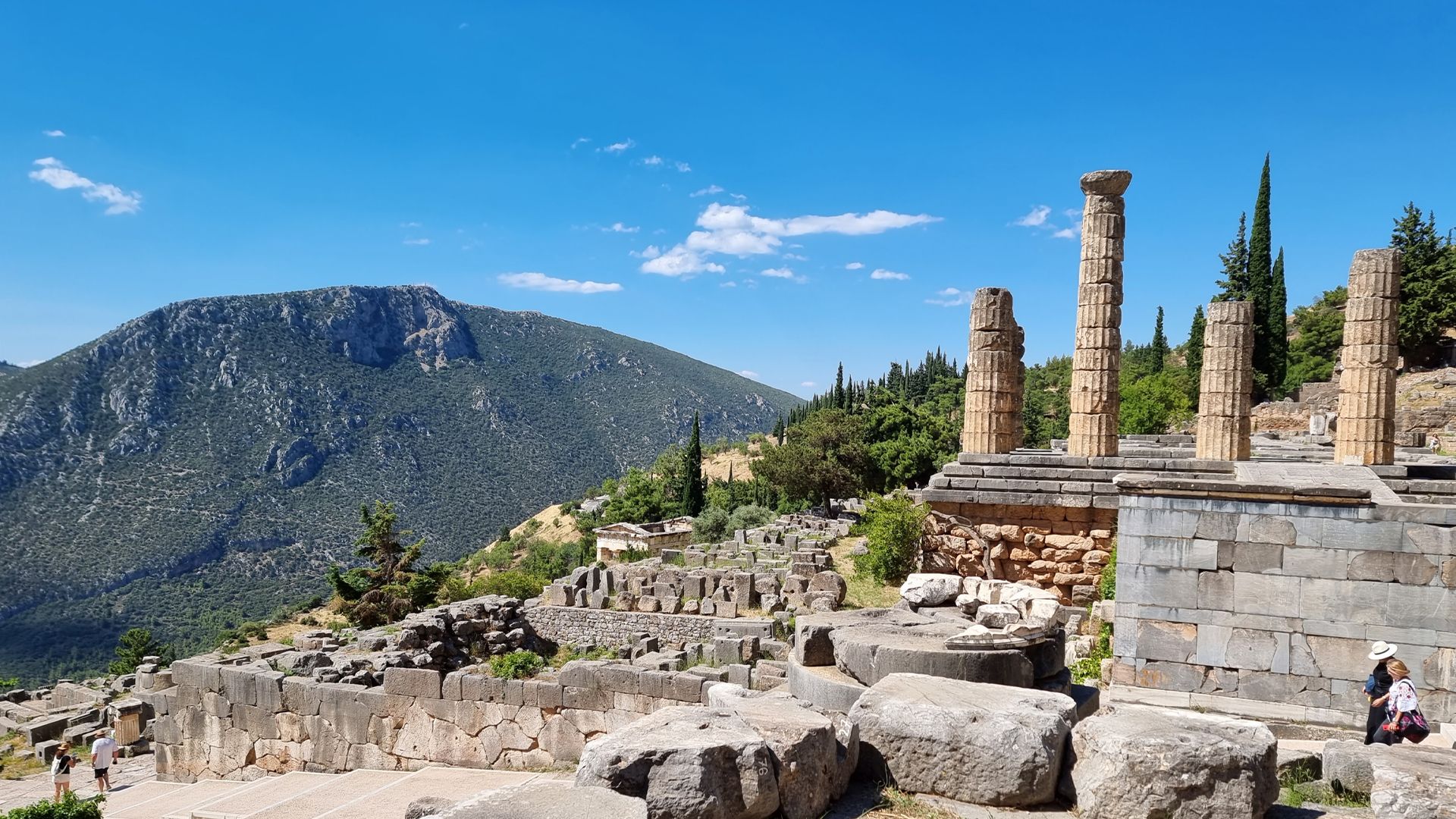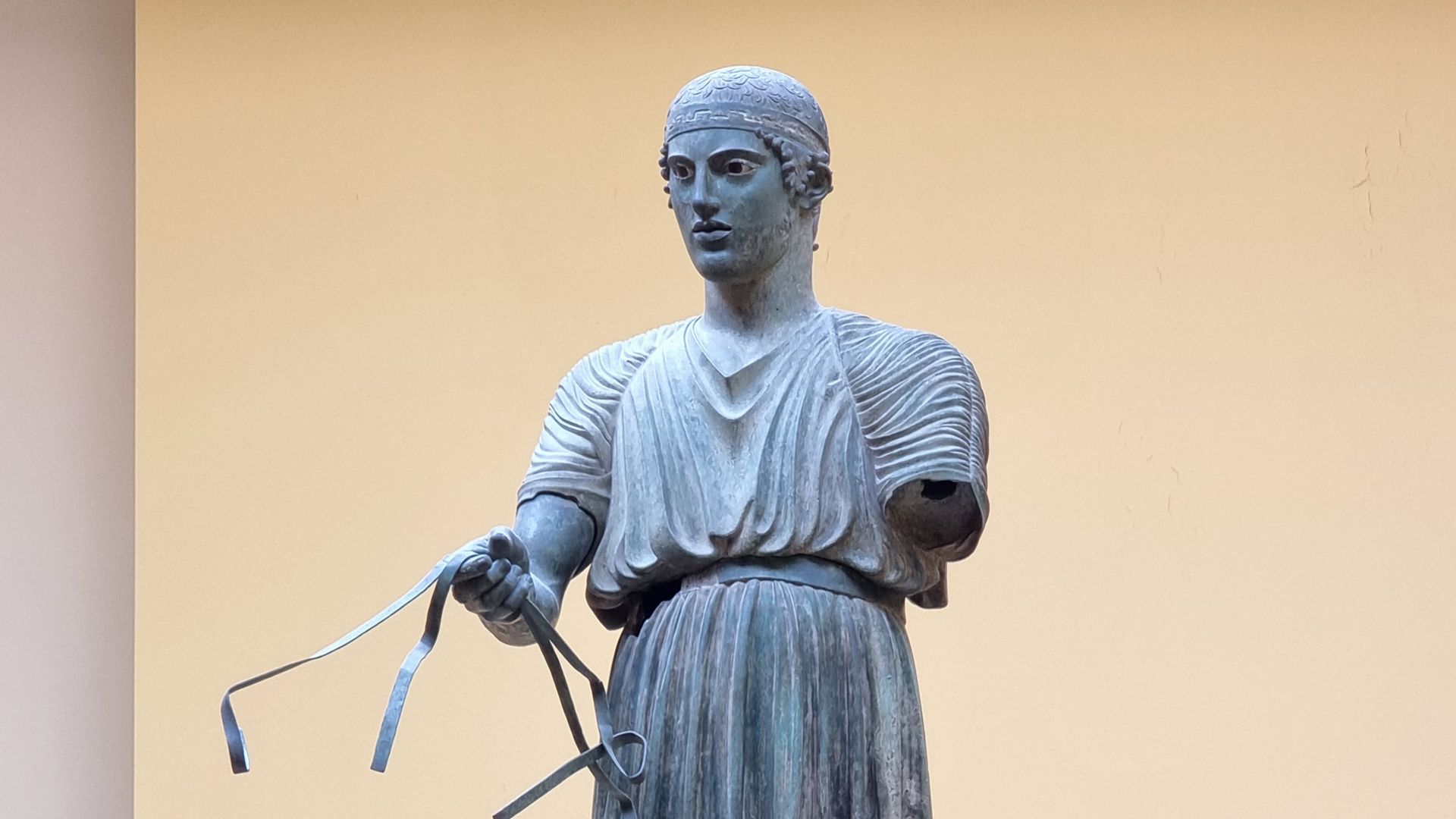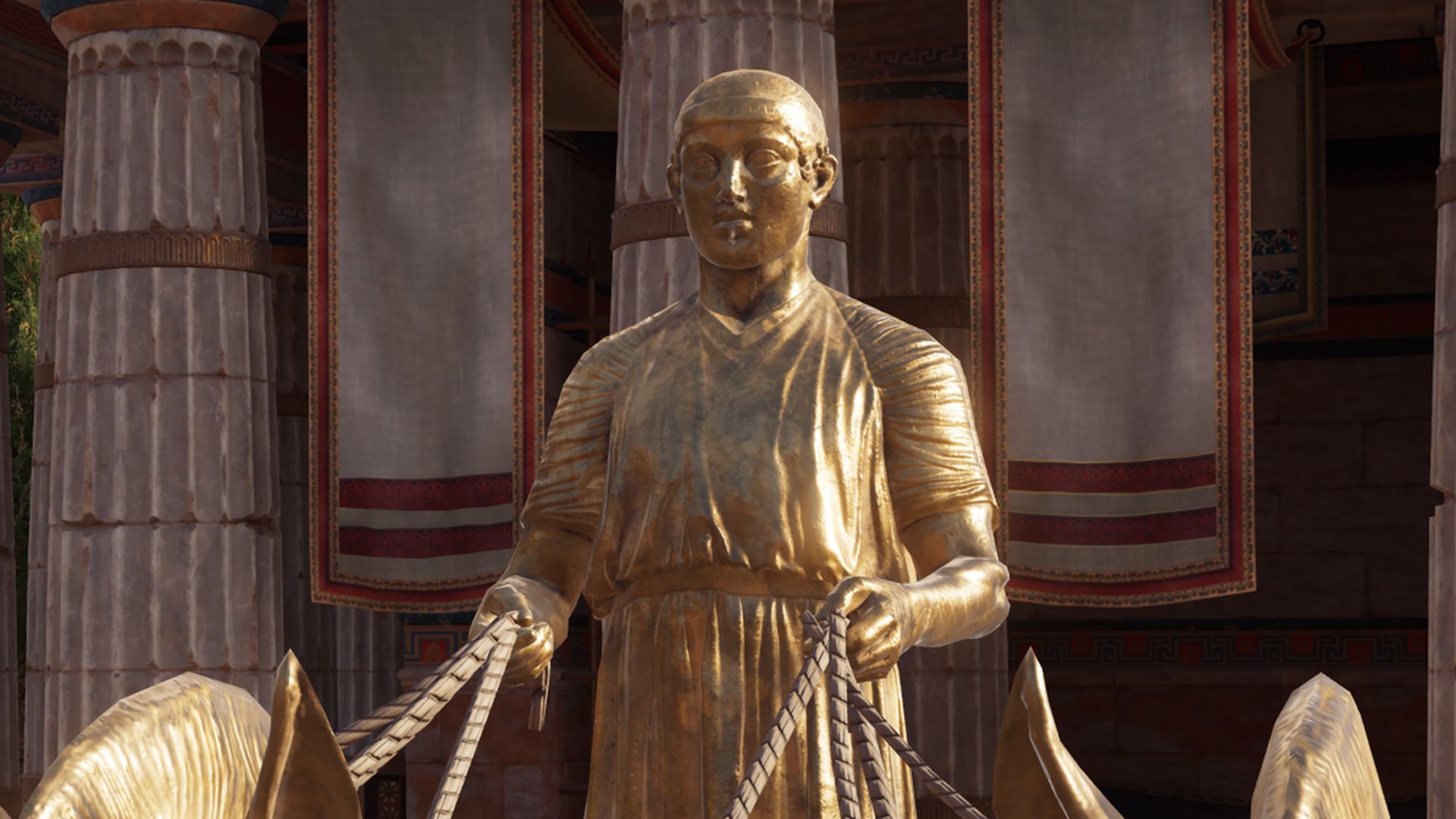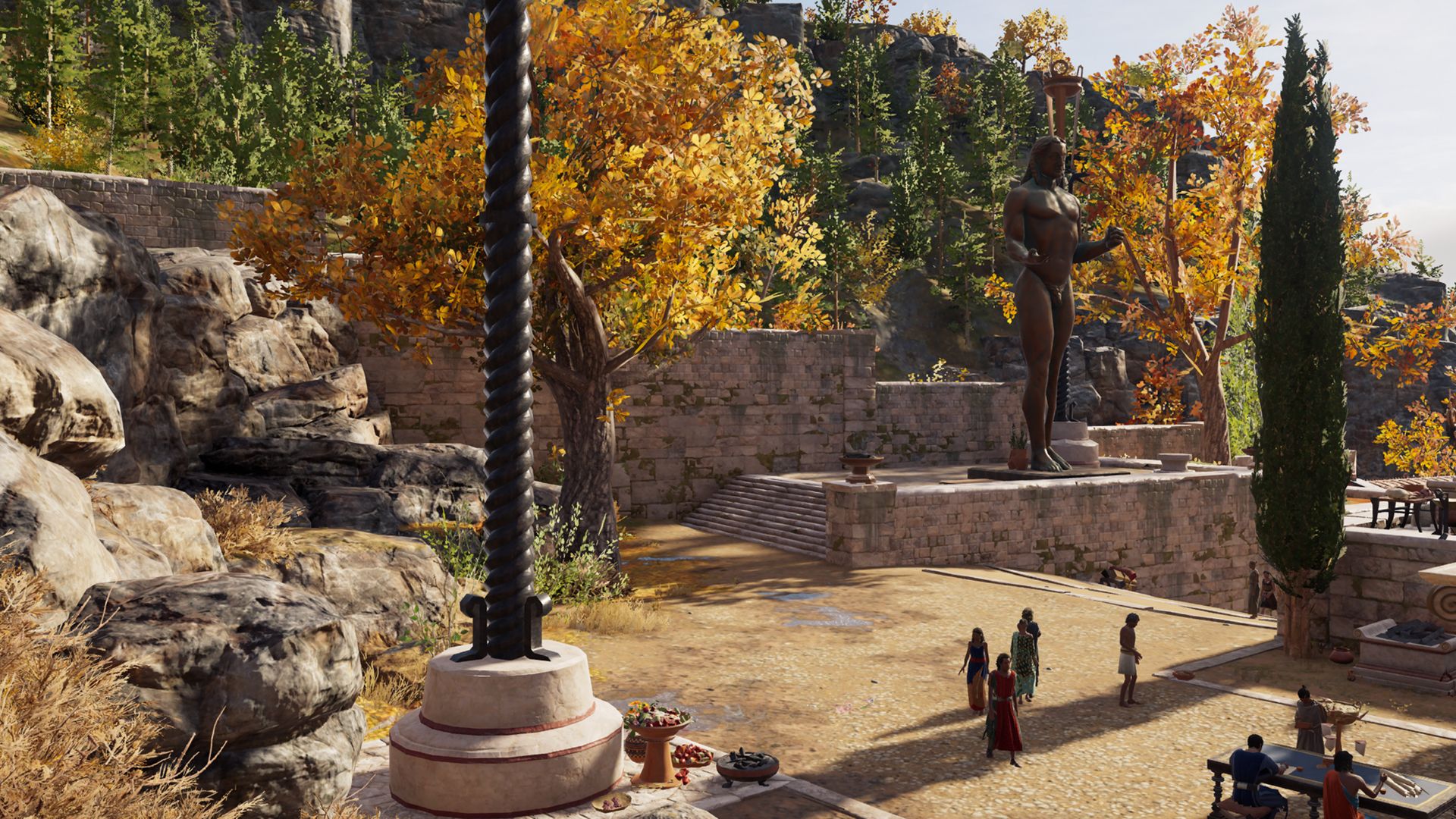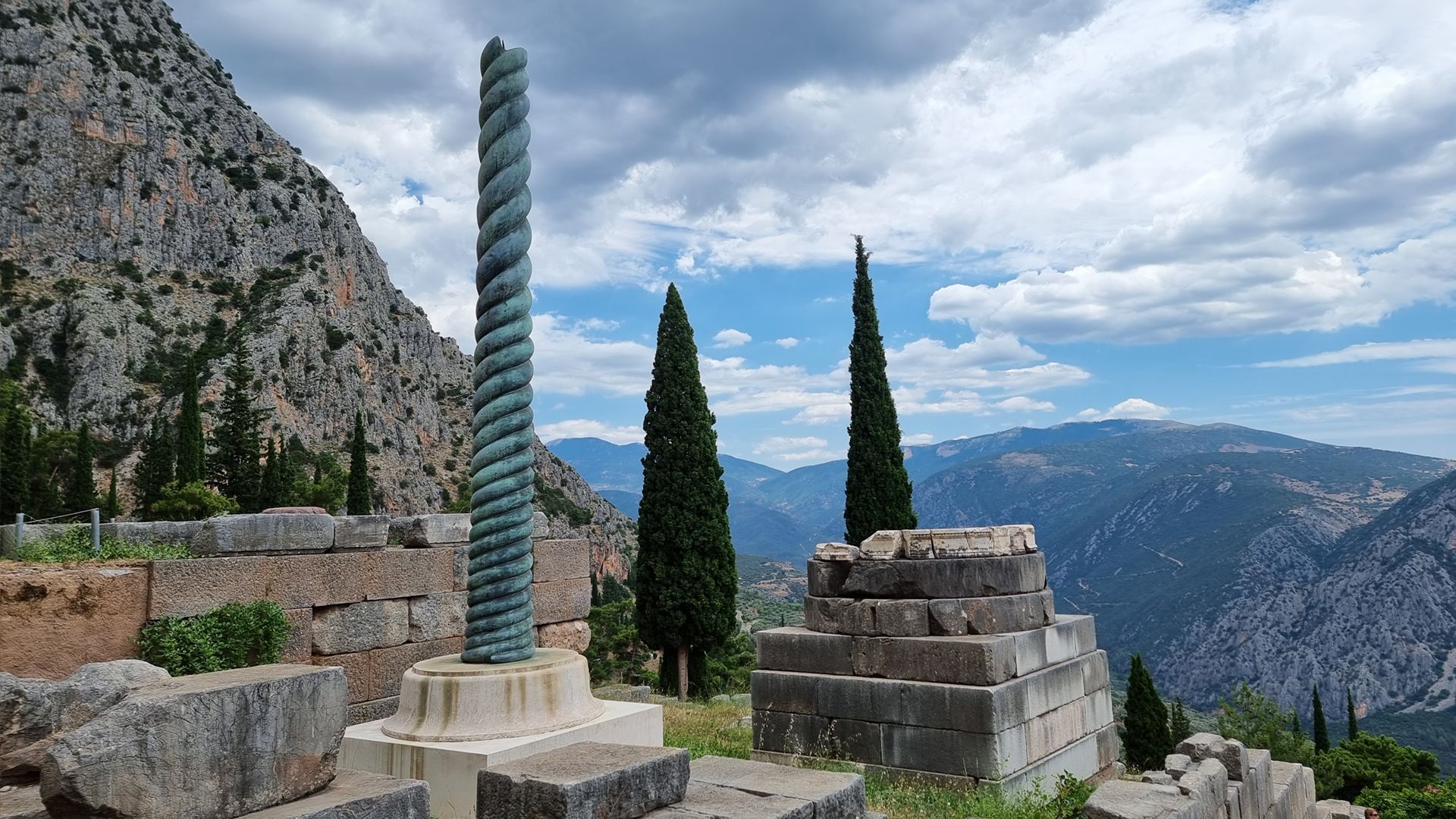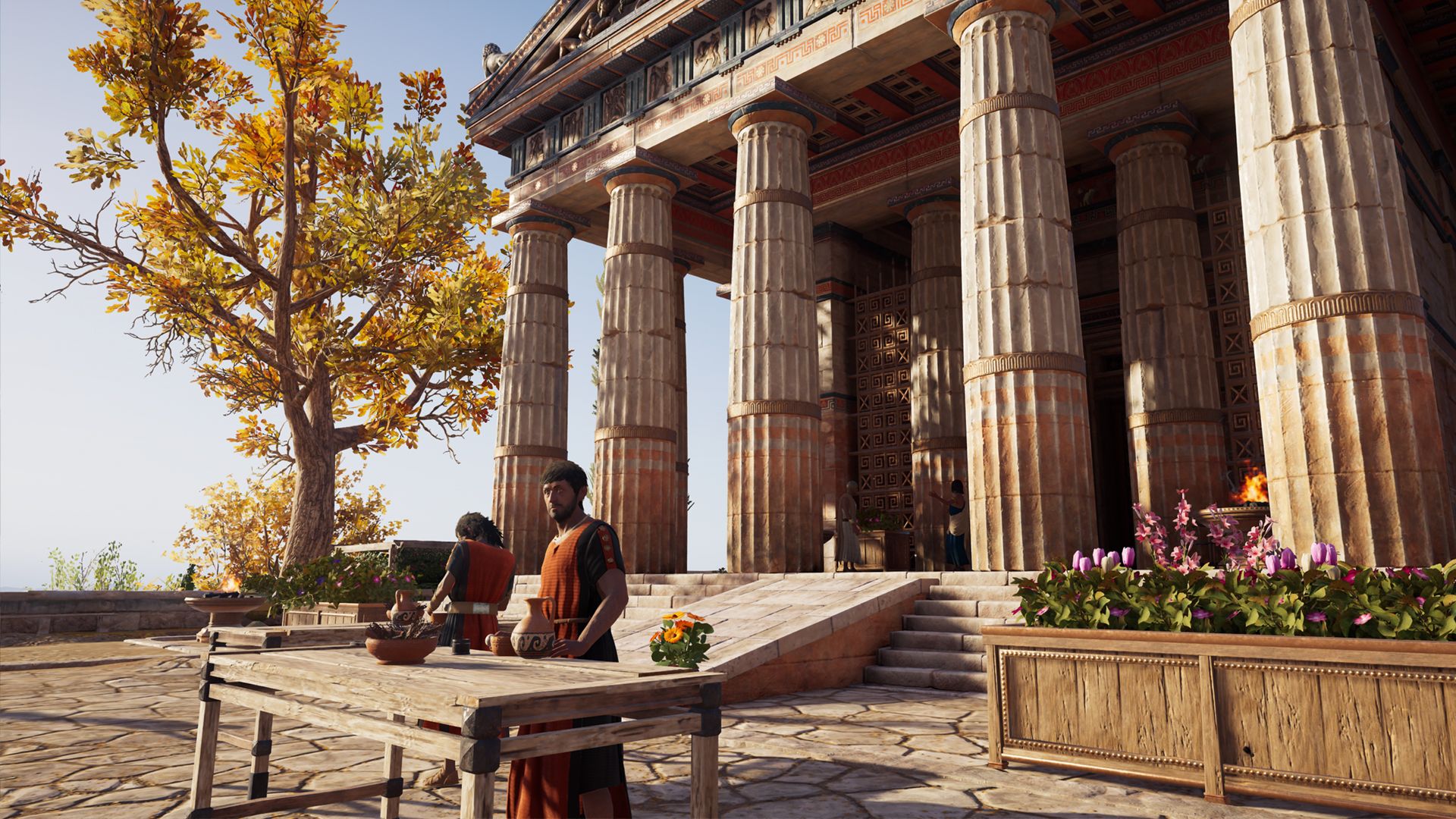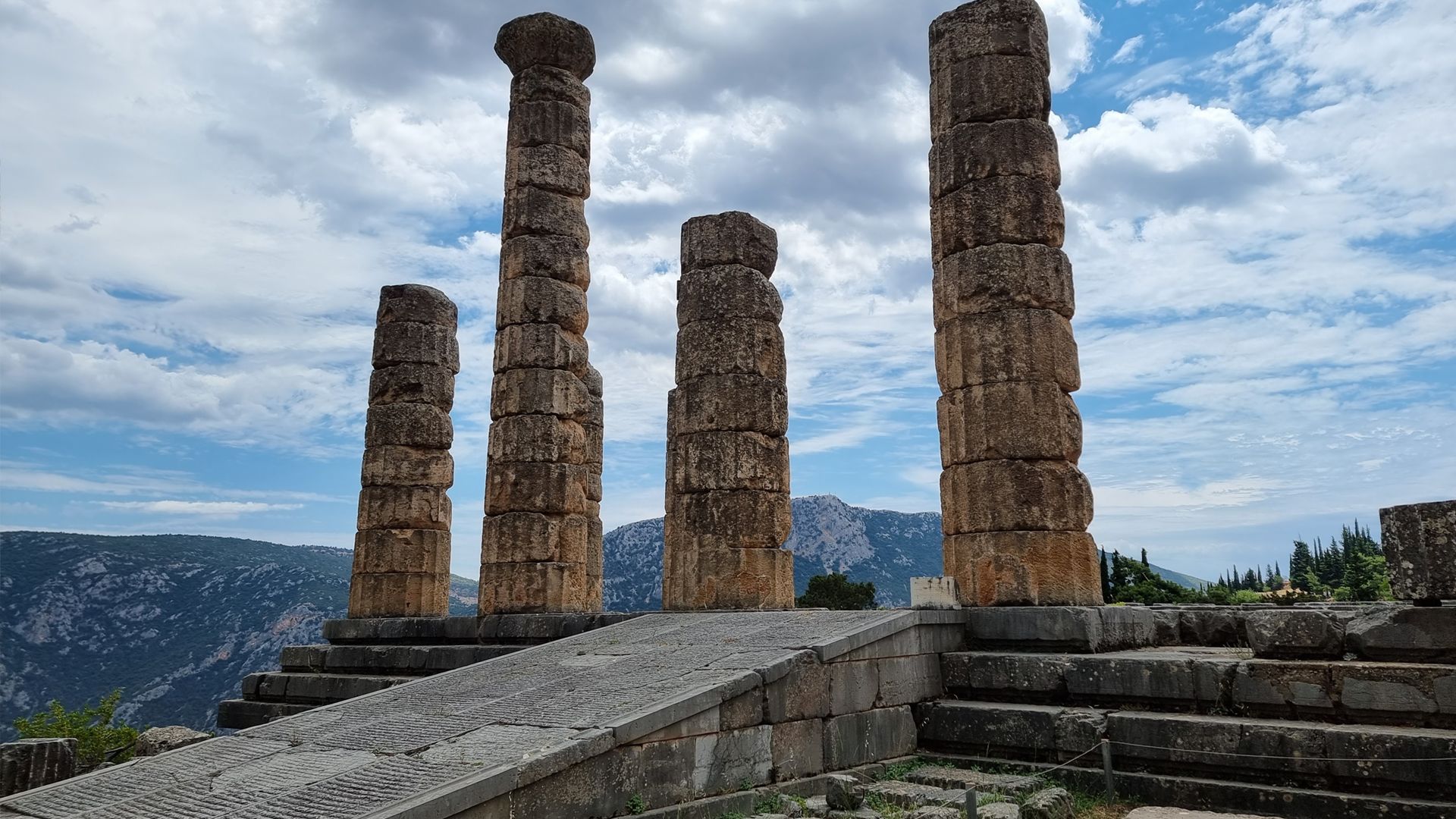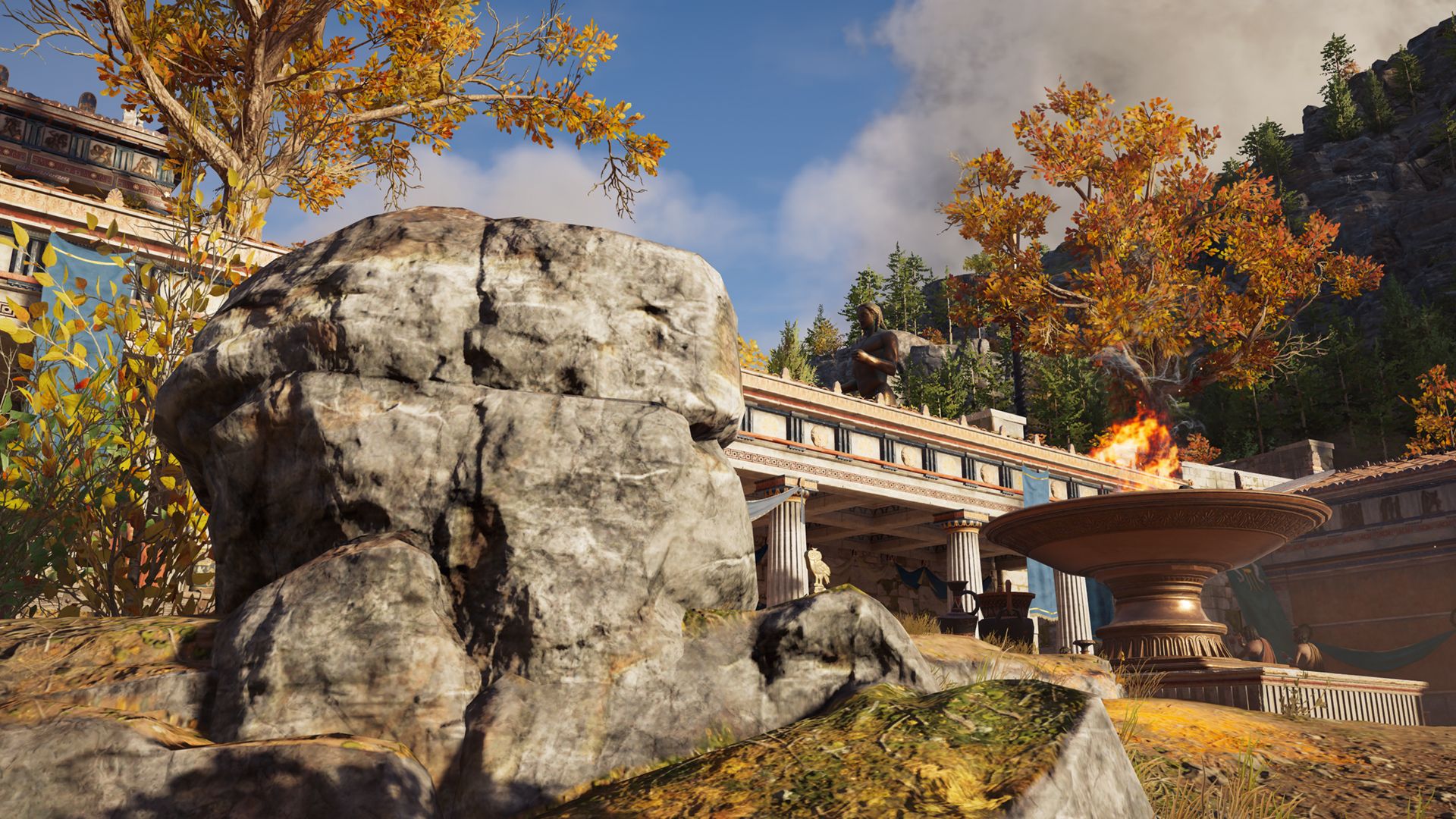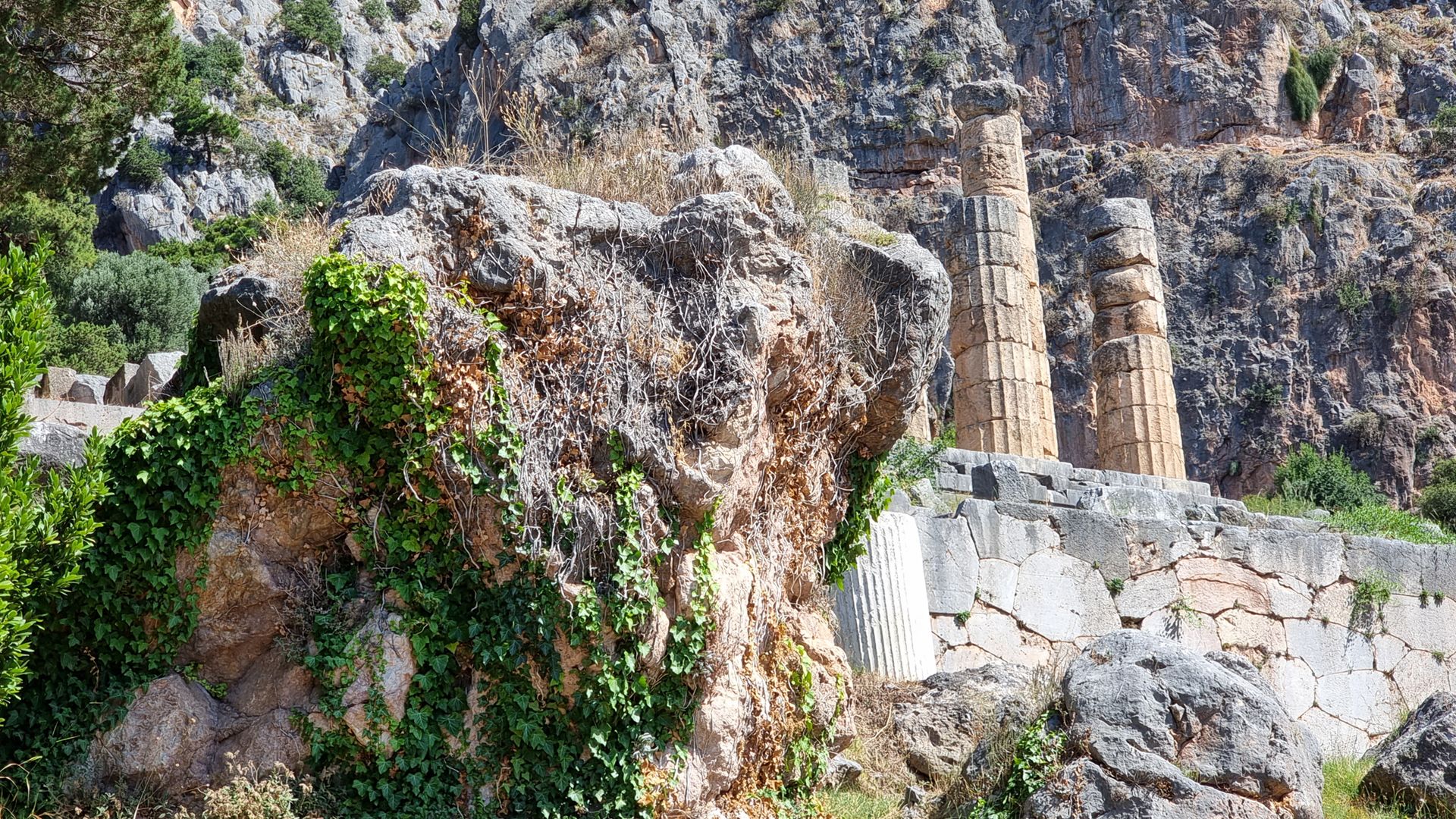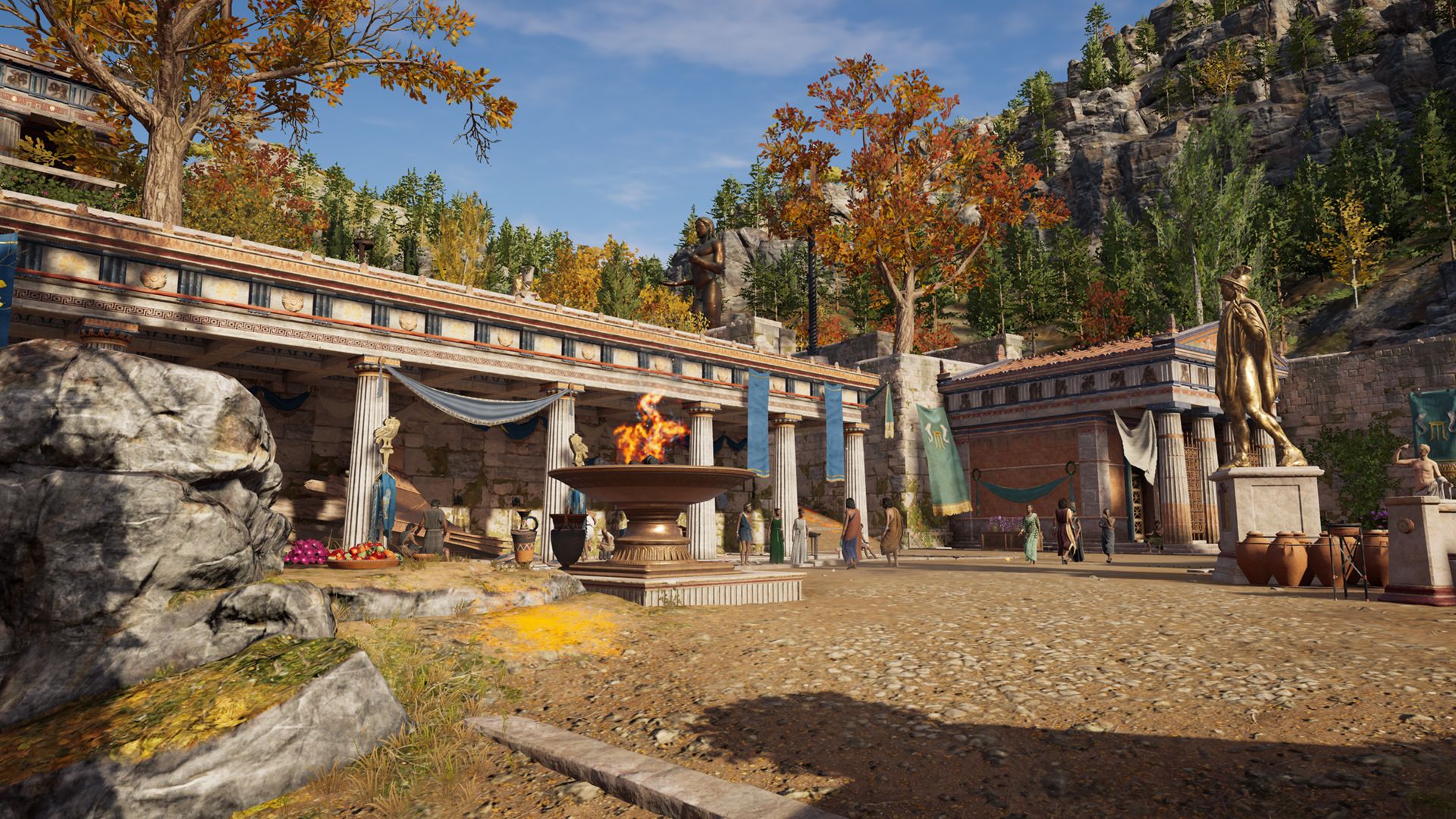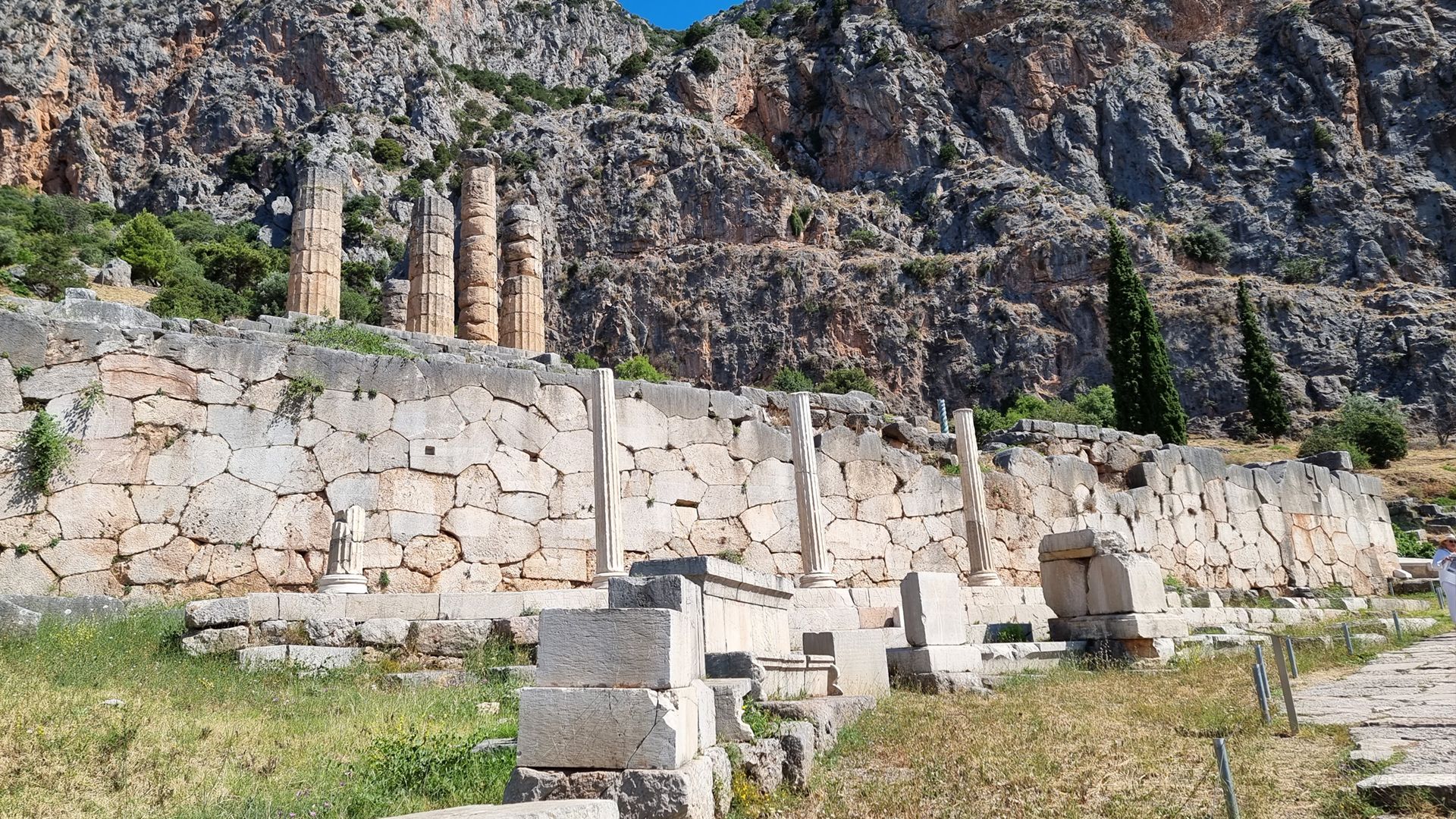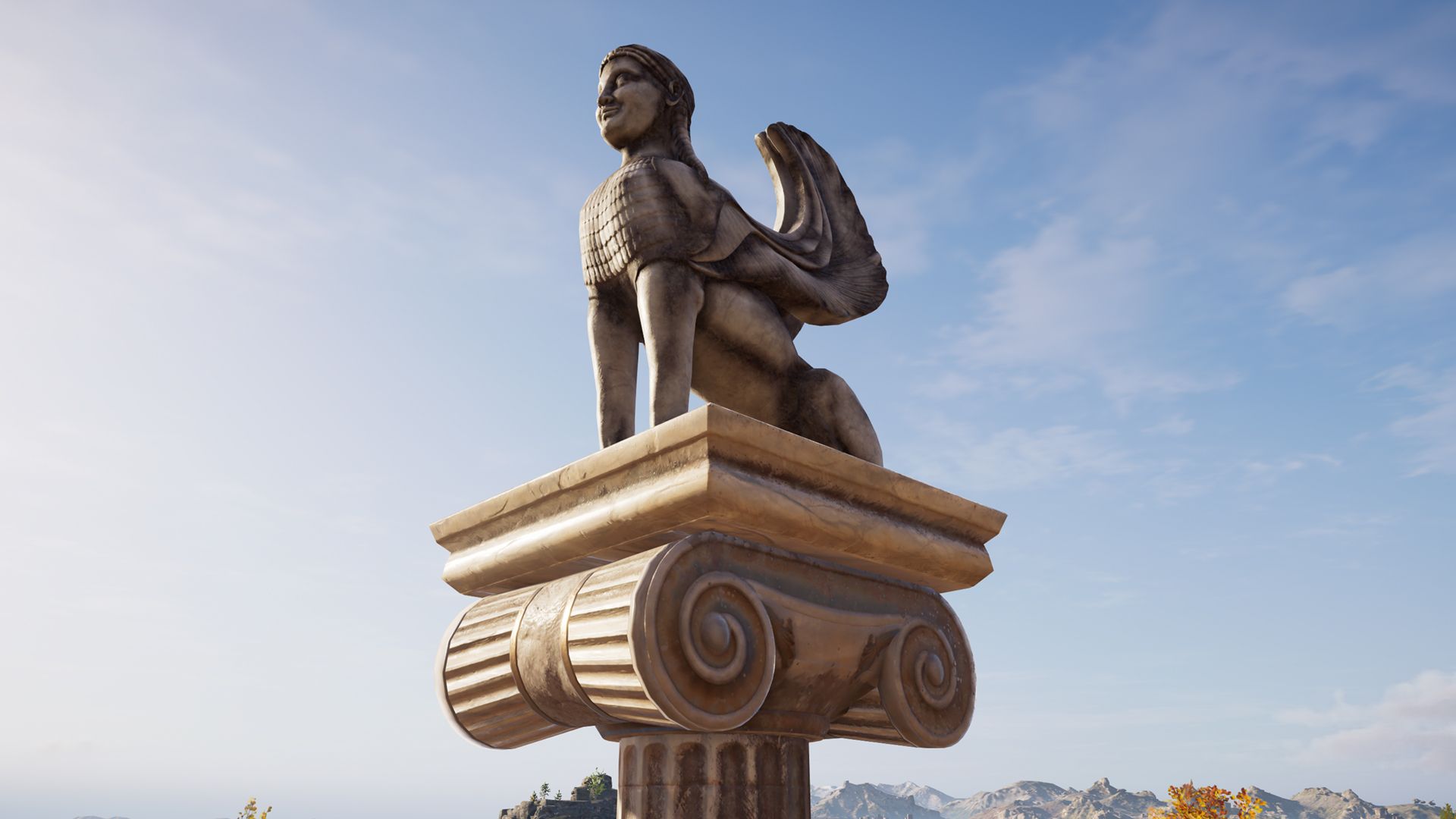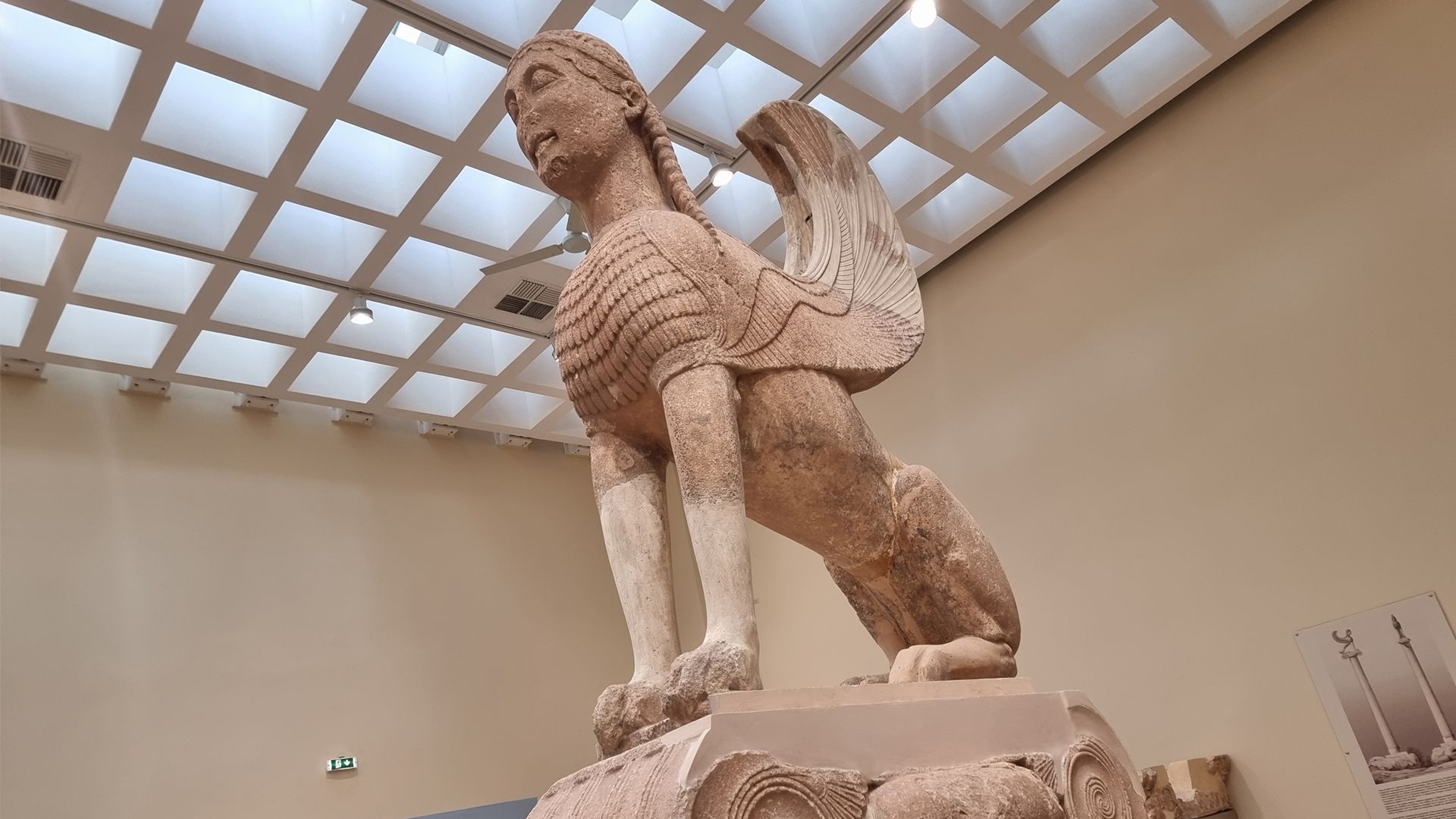I've just returned from a two-week vacation in Greece–a beautiful, sun-soaked land of gods and mythic heroes. I didn't follow in those legends' footsteps, however, having spent most of the trip sweating uncontrollably while eating gyros. But I did find time to soak up a bit of history between mouthfuls of pork and tsatziki-stuffed pita, including a visit to the famous Sanctuary of Delphi.
If you're a fan of Assassin's Creed Odyssey you'll be very familiar with this place. Considered the centre of the world by the ancient Greeks, this sacred precinct located on the slopes of Mount Parnassus was home to the Pythia, a soothsaying oracle. It's one of the most popular archeological sites in Greece, and I was lucky enough to visit it twice; at first with a guide, then exploring at my leisure.
Immediately, I felt like I'd been there before. Having spent a good amount of time in Odyssey's recreation of Delphi in its heyday, it was striking how familiar it all seemed. Ubisoft's army of artists did an incredible job capturing the geography, terrain, and distinctive atmosphere of the real location. Admittedly, I'm slightly ashamed that my first thought upon entering this incredible, historically significant place was 'this is like a video game I played once,' but I couldn't shake the feeling. It only grew more powerful as I wandered up the slopes, weaved between the ruins, ran my hands over the smooth marble, and ran away from scary-looking Mediterranean bugs flying directly towards my face. Not very heroic, I know.
I also took a lot of photos, then used Odyssey's in-game photo mode to recreate them. First up, this beautiful view of the sanctuary from above. You can see the famous theatre in the foreground–overlooking the grand Temple of Apollo–where ancient Greeks would gather to enjoy plays, poetry readings, and philosophical lectures. The far landscape in the game is a lot more rugged and jagged than the real place's rolling foothills, but otherwise the view is remarkably similar.
Here's a closer look at the theatre from ground level. Cut out of the mountainside, with seats made of local limestone, it could host audiences of around 5,000 people back in the day. They still put on plays, concerts, and other events there now, which would have been cool to see. Alas, all I encountered were hordes of slow-moving tourists with moist foreheads. The theatre was remodeled by the Romans, which explains why the game's depiction of it is slightly different.
This is one of the most iconic buildings in Delphi: the Athenian Treasury. In the sanctuary's glory days this thing would have been stuffed with all manner of expensive, luxurious treasures offered up to Apollo. It was also used to store loot from successful battles, including the Battle of Marathon. It's one of the few buildings still standing at the site today. Odyssey's recreation gives you a good idea of what it would have looked like before it was ravaged by time.
Here's a closer look at the remains of the metopes that decorate the treasury. These stone squares depict the adventures of Hercules and Theseus. They were found scattered around the site when Delphi was excavated, and there's debate about the order they were supposed to be in. Odyssey restores them to their former glory, and also gives you a sense of how colourful these buildings used to be. Even though I know ancient Greek statues were painted (which Odyssey accurately depicts), I still see them as white and pristine in my stubborn mind's eye.
Another view of the Athenian Treasury, from behind this time. This gives you a sense of how dramatic the landscape around Delphi is: although the game fails to capture the sheer stunning scale and beauty of the actual place. You can totally see why the ancient Greeks thought this part of the world was sacred. This is one area where it becomes obvious that Odyssey's depiction of Greece, as fantastic as it is, has been majorly condensed and scaled down to fit inside a video game.
The Temple of Apollo is the most famous building in Delphi. It was in its golden era, and it still is today thanks to those iconic columns. They're the first thing you notice when you approach the sanctuary from afar, and seeing them immediately whisks you back to classical Greece. Not much of the temple remains today besides its foundations, but in Odyssey you get a vivid insight into what the structure might have looked like when the Pythia was still plying her trade.
One of the most important archeological finds at the site–and a star attraction at the Delphi Museum–is the Charioteer of Delphi. This ancient bronze sculpture depicts a victorious chariot racer and was dug up in 1896. The real thing has an uncanny, haunting beauty to it, which Odyssey's recreation doesn't quite capture. He looks kinda goofy in the game, sadly. Still, it's nice to see the statue in situ near the Temple of Apollo, with his long vanished horses still intact, gilded and glorious.
This coiled bronze column was built to commemorate the Greek defeat of the Persian Empire at the Battle of Plataea. It was originally located in Delphi, but was relocated to Constantinople by Constantine the Great. The column on display at Delphi today is a replica, although the original stone pedestal still exists. This object has a long, fascinating, complicated history spanning over 2,500 years, and Odyssey lets you see it in its original form, topped with three snake heads.
The entrance to the Temple of Apollo, and the most photographed place in Delphi. Every second of the day, someone is standing in front of it posing for a picture. I tried to get one straight on for the article, but there was never a gap in the endless sea of tourists. Still, this gives you a good idea of what those remaining columns would have looked like when they still had a building left to prop up. I do wonder why they made the stone ramp smaller in the game, though.
If you didn't know this rock had any historical significance, you could easily walk right by it. But this unassuming outcrop is arguably one of the most mythologically important places in the sanctuary. It's claimed this is where Sibyl, the first oracle, was granted her powers by Gaia the Earth goddess. Odyssey's depiction of the rock isn't entirely accurate, but I appreciate its inclusion nevertheless. I'm glad my guide pointed this out. I'd have obliviously strolled past it otherwise.
This is the Stoa of the Athenians, a structure called a portico that was located near the Temple of Apollo. In Odyssey it's littered with shields, weapons, and ship heads, reflecting its real-life purpose as a place for storing and displaying spoils of war. These were offerings to Apollo, but also a way for the Athenians to show everyone just how good they were at winning battles. Such show-offs. It once had a wooden roof, but all that's left standing today are these crumbling remnants.
And finally, here's the famous Sphinx of Naxos. Today, this is located in the Delphi Museum (where I took my photo), but it used to stand on a 41-foot column in the sanctuary itself–which is where it's found in Odyssey. The sphinx was created by the islanders of Naxos, one of the richest islands in the ancient Greek world. They gifted it to the sanctuary and were given special access to the Pythia as a reward. Money and influence got you far back then. Some things never change.
Assassin's Creed Odyssey (and the series in general) gets plenty of details wildly wrong, and takes artistic license with gleeful abandon. But even so, it's unbeatable in terms of making you feel like you're stepping back into history. Being familiar with the game's depiction of Delphi definitely enhanced my experience of visiting the real place. Playing it implanted a strong, vivid image of what the sanctuary might have looked like in my brain, which filled in the blanks between the ruins. The feeling of having been there before was palpable with every step I took, and I wasn't seeing the faded remnants of Delphi: I was seeing the place.


